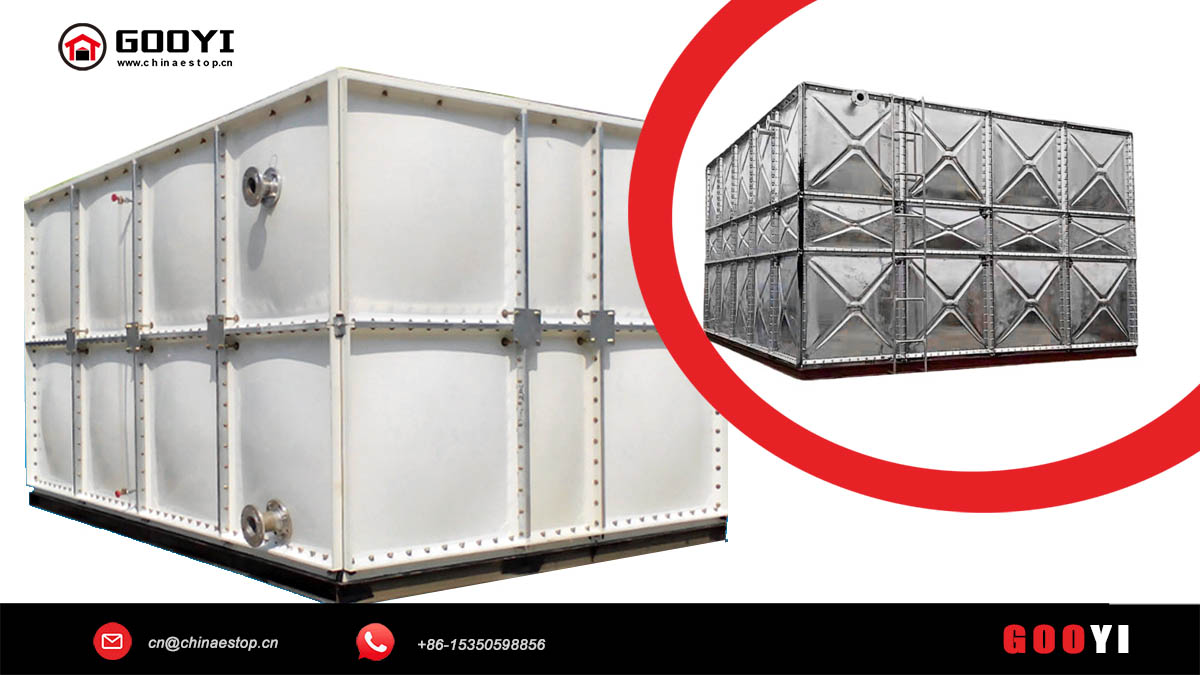When deciding between a GRP sectional water tank and a Galvanized Steel sectional water tank, it’s important to consider several factors including durability, maintenance, cost, environmental conditions, and specific application needs. Below is a detailed comparison of both types:
🟢 GRP Sectional Water Tanks
Advantages:
- Corrosion Resistance: GRP tanks are highly resistant to corrosion, making them ideal for environments where water quality or chemical content could affect metal tanks.
- Lightweight: GRP tanks are lighter than steel tanks, which makes them easier to transport and install.
- Low Maintenance: Due to their non-corrosive nature, GRP tanks require minimal maintenance over their lifespan.
- Customizable: They can be easily customized in terms of size and shape, fitting various installation requirements.
- Excellent Insulation Properties: GRP provides good thermal insulation, helping maintain water temperature more effectively than steel.
- Long Lifespan: With proper care, GRP tanks can last up to 25 years or more.
- UV Protection: Many GRP tanks come with UV protection, making them suitable for outdoor installations.

Disadvantages:
- Higher Initial Cost: GRP water tanks generally have a higher upfront cost compared to galvanized steel tanks.
- Potential for Surface Damage: While resistant to many chemicals, GRP can be susceptible to damage from certain solvents or abrasive materials.
🔴 Galvanized Steel Sectional Water Tanks
Advantages:
- Cost-Effective: Galvanized steel water tanks tend to be less expensive initially compared to GRP tanks.
- Strength and Durability: Steel offers excellent structural strength, making it suitable for large-scale applications or areas requiring robust construction.
- Ease of Installation: Steel panels are straightforward to assemble, often allowing for quicker installation times.
- Wide Availability: Steel tanks are widely available and can be sourced from numerous manufacturers.

Disadvantages:
- Corrosion Susceptibility: Over time, especially in humid or saline environments, galvanized coatings can degrade, leading to rust and corrosion.
- Regular Maintenance Required: To prevent corrosion, regular inspections and maintenance are necessary, adding to long-term costs.
- Heavier: Steel tanks are heavier, complicating transportation and installation, particularly in locations with difficult access.
- Environmental Concerns: The production process for steel is energy-intensive and has a larger carbon footprint compared to GRP.
📊 Comparison Summary
| Feature | GRP Sectional Water Tank | Galvanized Steel Sectional Water Tank |
|---|---|---|
| Durability | Highly durable, resistant to corrosion | Durable but prone to corrosion over time |
| Weight | Lightweight, easier to handle | Heavier, harder to transport and install |
| Maintenance | Low maintenance required | Regular maintenance needed to prevent corrosion |
| Initial Cost | Higher initial investment | Lower initial cost |
| Lifespan | Can last 25+ years | Lifespan reduced by corrosion if not properly maintained |
| Insulation | Better thermal insulation properties | Poorer insulation, may require additional insulation layers |
| Installation | Modular design allows for custom sizes | Straightforward assembly but heavier components |
🏁 Conclusion
Choosing between a GRP sectional water tank and a galvanized steel sectional water tank largely depends on your specific needs and circumstances:
- For projects prioritizing long-term durability, low maintenance, and resistance to harsh environmental conditions, a GRP tank is likely the better choice despite its higher initial cost.
- If budget constraints are a major consideration and you’re looking for an economical solution with acceptable performance, a galvanized steel tank might be more appropriate, provided you’re willing to commit to regular maintenance.
Understanding these factors will help you make an informed decision that aligns with your project’s goals and budget.

